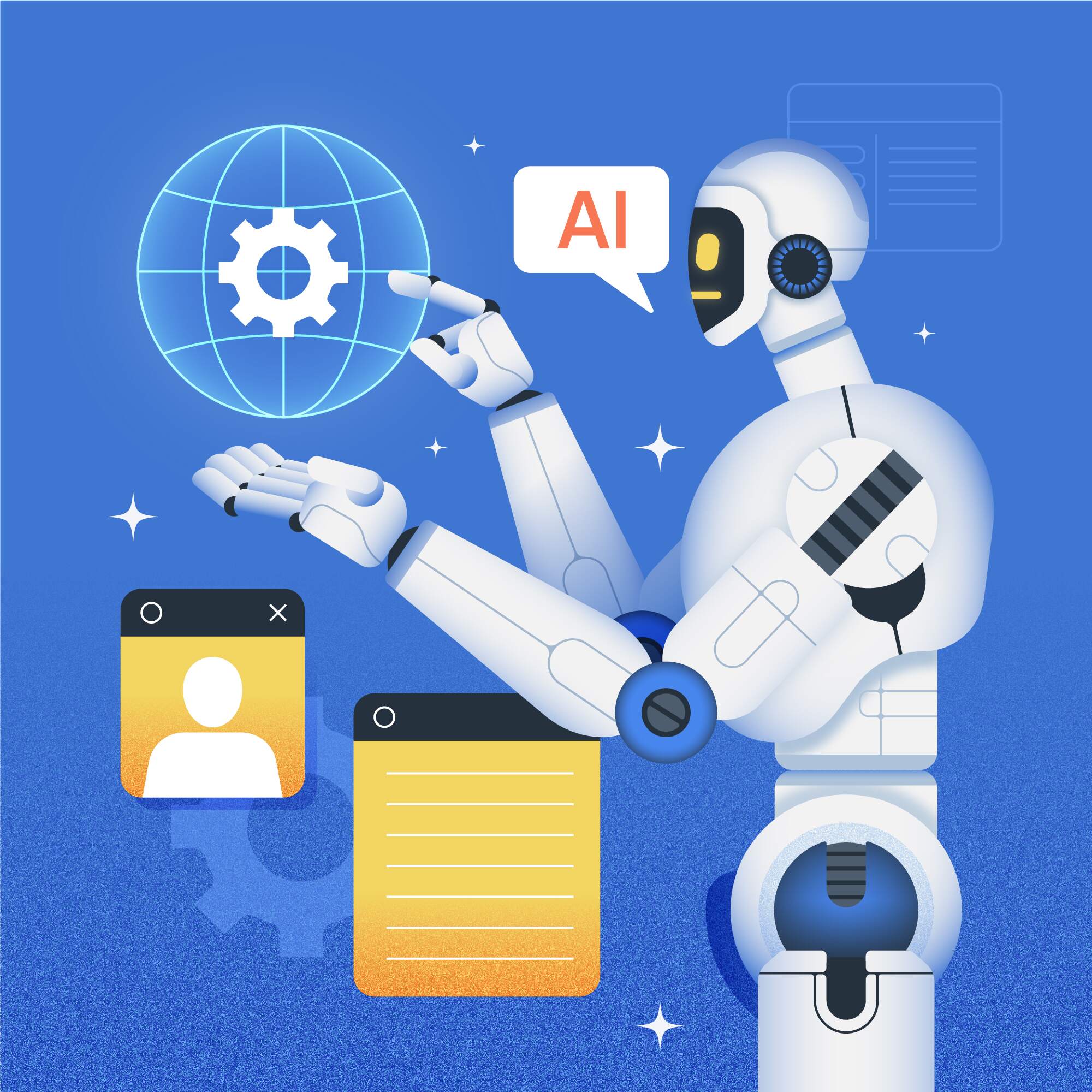Forecasts for App Development in 2024
Nowadays mobile apps have become the next battleground driving individual experience connecting to customers directly and making the company run efficiently. Nowadays, given the 80-million-app figure on both iOS and Android platforms, the mobile apps industry is developing at the speed of an F1 racing car and has no sign of being stopped for at least one coming generation.
Additionally, the development process has become more democratic due to the emergence of new frameworks, platforms, development tools, and user preferences. This has encouraged developers and appreneurs to design user-centric apps. This makes it necessary to stay current with the newest developments in mobile app development, which will sustain the rate of business expansion in the upcoming years. Join us as we dive in and see what lies ahead!
Trends in App Development Will Rule the Market by 2024
The trend of creating creative apps that address particular use cases has grown recently. This has compelled experts like CIOs, programmers, engineers, UI/UX designers, and mobile app developers to produce more eye-catching, focused mobile apps, and it has also forced them to adjust to the top trends that will dominate in 2024, which are as follows:
1. A User Interface Driven by AI for Micro-Interactions and Hyper-Personalization
Treating someone like a person matters more than treating them like a statistic. Their likelihood of considering personalized offers is 2.1 times higher. Furthermore, seventy percent of them think that a company’s ability to meet their individual needs has a direct effect on their loyalty. These studies show the importance of personalization in creating enduring consumer relationships. Mobile app developers can attain this level of customization by using AI-powered tools, recommendation engines, neural networks, and machine-learning algorithms.
Since 2023, artificial intelligence (AI) has gained popularity since it can deliver accurate insights and minimize human labor. Developers have access to an entirely new array of AI-powered tools that offer a multitude of user data types—including feedback, patterns, preferences, demands, and other behavioral aspects—with unmatched precision. These tools allow developers to:
- Easily personalize mobile app content with a guided flow and remarkably precise suggestions.
- Enhance the app’s features and include visually striking components.
- Attend to the interests of each user.
- Make flexible user interfaces.
- Make sure the user journey is more fulfilling.
Applications of AI in the Real World for App Development;
- Smart search in the Google and Amazon search apps
- Personalized suggestions akin to those from Spotify and Netflix
- Similar to Google Lens, Sentiment Analysis, Language Translation, and Image and Voice Recognition
- In banking apps, security features like Face ID and fingerprint authentication
As everyone is aware, Apple is a covert powerhouse in artificial intelligence (AI), having invested in and acquired hundreds of AI businesses to improve user micro-interactions across a range of platforms. In a similar vein, several brands have stepped up their use of AI in their app development projects with great zeal to achieve long-term value, enable intelligent testing, streamline team collaboration, and automate tedious operations.
2. Developing Cross-Platform Applications to Rethink Their Creation
It is expected that cross-platform app development will be a growing trend soon and it will make a huge impact on the app design, development, and distribution processes to the users for years to come.
As a result, it becomes a catalyst for productivity and creativity in the development of mobile apps. The platform utilizes a single, all-inclusive programming code. This leverages the advantage of cross-platform strategic options for developers to develop apps that function seamlessly across multiple operating systems including iOS, Android, and others. It helps to put an ecosystem in place using several teams, including both businesses and apps (and developers) that are positive contributors to it.
- Simplifies the development process, thus reducing expenses and development time.
- Reduces time to market by enabling quick deployment across several platforms at the same time.
- Promotes user pleasure and loyalty by maintaining consistency in design, functionality, and usefulness.
- Reduces errors and redundancies, resulting in more reliable and stable applications
- Provides performance levels close to native and eliminates worries about lag or subpar user experiences
- Ability to incorporate new technologies into mobile applications, such as IoT, AI, AR/VR, and Metaverse
- Enhances the connection between developers and the different components they work with, including people, platforms, tools, and processes.
The appearance of advanced cross-platform development frameworks and toolkit simple processes leads to this trend more significantly. The highest cross-platform development frameworks structured are PhoneGap, Ionic, Xamarin, React Native, Flutter, and Kotlin. By using each of these technologies app builders can add more features and enhancements. Dependency management is another factor that affects the efficiency of development work. The libraries and plugins that are accessible meet different workflows and requirements, which means more freedom for the developers to build better applications.
Cross-platform mobile app development and streamlined workflows have already been leveraged by firms such as Shopify, Walmart, Google, Spotify, Facebook (Meta), and others. The coming year looks to be revolutionary as companies adopt this multiplatform strategy; it will be characterized by creativity, effectiveness, accessibility, compatibility, and user-centricity.
3. Increasing the Bar for App User Engagement with Chatbots
With the introduction of ChatGPT, chatbots have entered a new phase in which they may now become sentient, flexible beings rather than just preprogrammed responses. After that, the chatbot’s interaction increased. More than 70% of consumers today want prompt responses from brands, which is achievable with advanced chatbot features. They can automate client correspondence in ways like;
- Take 30% of the conversations in live chat.
- Walk users through the new features or functionalities of the software.
- Send clients to product pages or customer service representatives
- Show users around the various app parts to their requirements.
- Demonstrate a challenging procedure.
- Respond to user inquiries promptly.
They produce noteworthy commercial results by;
- Reacting better every time by taking lessons from user interactions.
- simplifying customer service process workflows.
- Managing several interactions at once
- Using dialogue to boost sales
- Setting up meetings
- More reaches being converted into leads
It is anticipated that chatbots will have a bright future by 2024. Over 50% of market players, including Samsung and Microsoft, are concentrating on extending the application of chatbots. It will remain here and change the way that businesses and customers interact.
4. Increased Priority for Cybersecurity and Better Application Security
Malware attacks, security flaws, and vulnerabilities affecting applications such as Uber, HSBC Bank, Slack, and Twilio have increased dramatically in recent times. Somewhere in 83% of mobile apps is a security hole.
Apps will eventually be hacked when more commercial and consumer-facing apps enter the market. As a result, mobile app security is an essential issue that cannot be compromised.
Furthermore, users are entrusting mobile apps with an increasing amount of personal data; they are undoubtedly tech-savvy and aware of their digital rights and privacy. They anticipate that cyberattacks and unwanted access will be prevented from their data. Transparency in data sharing and app hacking were two further issues that concerned some. Unexpected data breaches can negatively impact your brand’s reputation and customer trust.
Do not forget that one should also adhere to regulatory issues like GDPR, CCPA, and HIPAA which will be very useful for the security of mobile apps in cyberspace. Companies that defy regulations may result in severe penalties and be subjected to legal consequences, which can also damage the consumers’ opinion of the products/services from the said companies
5. Multifunctional Apps Will Drive Wearable Tech’s Growth
With a history that dates back from the first-ever chronometer to the inventions of smartwatches, wellness trackers, and other devices, the legacy of wearable tech progress is an impressive one. Technological capability that contains evolving sensors, better battery life, stronger data processing, and less size has enabled manufacturers to implement more and more applications of wearable gadgets that make them more potent and competitive among users. In the imminent future, wearable technology is forecasted to advance at a speed that is just like a rocket without a stop according to the tech experts. You will find various known (well-known) applications, like Glide and Calm, in the wearable industry that has built up itself.
Why is it the same? The wearable consumer of today looks for products that fit in with their daily routines. They anticipate seamless device connectivity, user-friendliness, and a design that blends in with their aesthetic. Furthermore, wearable smart devices that provide personalized experiences have become more popular due to the excitement surrounding AI.
Businesses need to give priority to several crucial measures to fully utilize wearable technology, including;
- Incorporating wearable features into currently available mobile applications
- Putting the user first in design
- Putting strong data security safeguards in place is an essential first step.
- Work together with tech consultants
- Invest in user-centric design and research and development.
6. Integration of AR and VR
Excitation in the market has been generated by AR/VR products such as the recently released Apple Vision Pro, the Live View feature of Google Maps, Ikea’s Virtual Furniture Preview, Lenskart’s Virtual Trial of various frames, Loreal Paris’ Style My Hair app, and more. Additionally, other forward-thinking businesses are hopping on board and making significant investments in AR/VR technologies for a variety of applications.
AR and VR Technology Use Cases in Various Industries;
a. Training and Education
- VR provides realistic simulations for disciplines like medical instruction, enabling immersive learning. Educational flashcards for children in schools.
- Augmented Reality and Virtual Reality (AR/VR) allow for virtual tours of historical places or scientific contexts.
b. E-commerce and retail
- Virtual Try-On: AR enables users to virtually try on clothing, accessories, or cosmetics.
- Virtual reality produces immersive product experiences for internet buyers through interactive product visualization.
c. Travel and Hospitality
- Travel Experiences Virtual: provides virtual tours of many locations
- AR Guide Apps: AR delivers real-time information on tourism destinations.
d. Engineering and Manufacturing
- VR helps with prototype visualization and testing.
- Maintenance and Instruction: AR superimposes maintenance guidelines on machinery
e. Property
- Virtual reality (VR) enables remote property exploration.
- AR for interior design lets users see furniture in houses before they buy it
Enhanced graphic capabilities, improved hardware affordability, and the advent of 5G connectivity have propelled AR/VR into a realm of unprecedented possibilities, making them accessible to a broader user base.
7. Advancing Mobile App Functionality with Predictive Analytics
Predictive analytics is a vital tool that is changing industries and how we view and use information across touchpoints on our mobile apps as a result of the exponential growth of data and technological improvements.
Information regarding customers and machine learning techniques are utilized in crafting forecasting, as patterns are used to predict what the future will look like based on the data from both past and present. The fact that more processing capability, better algorithms, and access to a massive amount of data gives developers and CIOs who make up these programs the ability to understand the customers very well becomes the only major key to predicting the behavior, preferences, or wants of each customer.
Organizations that have created systems of real-time analytics and data-driven decision-making will be in the lead. Real-world examples of this are to be found in different organizations such as Microsoft, Netflix, Spotify, eBay, Amazon, and Google which have immensely benefited from predictive analytics, without any doubt about its considerable impact.
Besides this, proficient customers search for those mobile apps, which satisfy not only the present requirements but also the expected needs in the future, resulting in the reduction of the need and amelioration of convenience. Customers expect the data-driven insights to have a positive effect on their experience and privacy as long it is established using predictive analytics tools.
8. Increase in Mobile Transactions
The way customers engage with brands, purchase online, and perform financial activities through mobile banking apps is changing due to the dynamic nature of consumer preferences and the incorporation of cutting-edge tech stacks into comprehensive mobile commerce solutions.
The explosive growth of mobile commerce is attributed to several causes. This increase was driven by innovative features, user-friendly interfaces, seamless navigation, personalized interactions, enhanced accessibility, convenience, and flexible online payment alternatives. Companies that improve the entire customer trip, such as Walmart, Apple Pay, Starbucks, Nike, Sephora, and so forth, are making significant investments in commerce apps.
Keeping in view, tasks and mobile trade channels seem to be on an upward trend. AI assistants Voice Commerce and the incorporation of augmented reality for virtual try-ons, as well as personalized recommendation enabled by machine learning algorithms, are all anticipated to be major innovations in the Mobile shopping experience. Mobile commerce is certainly not a passing trend some businesses are reluctant to accept the changing trends, due to the rapid switch towards mobile commerce.
Conclusion
Moving forward, m-commerce seems to be on the right track. AI assistants Voice Commerce and the incorporation of augmented reality for virtual try-ons, as well as personalized recommendation enabled by machine learning algorithms, are all anticipated to be major innovations in the Mobile shopping experience. Mobile commerce is certainly not a passing trend some businesses are reluctant to accept the changing trends, due to the rapid switch towards mobile commerce. If you are looking for high quality web or app development services feel free to drop us a message




























